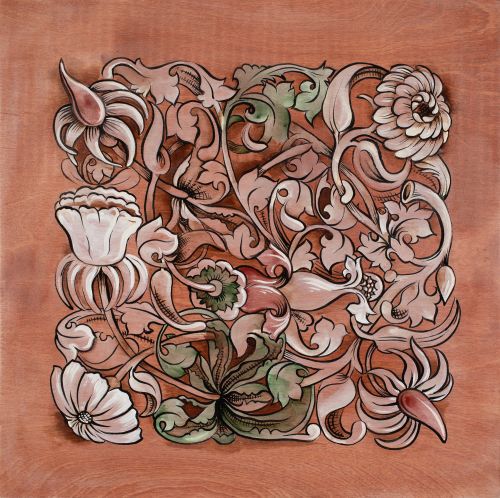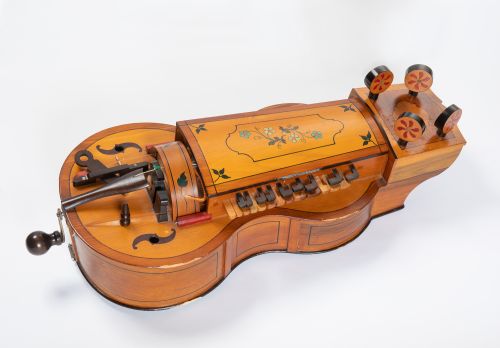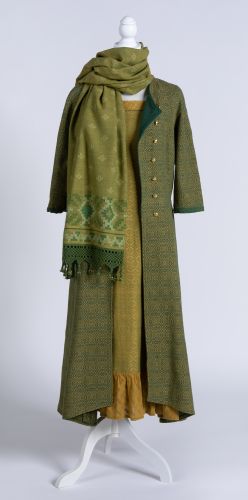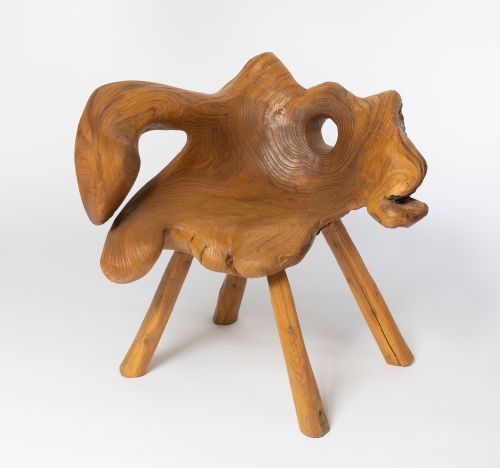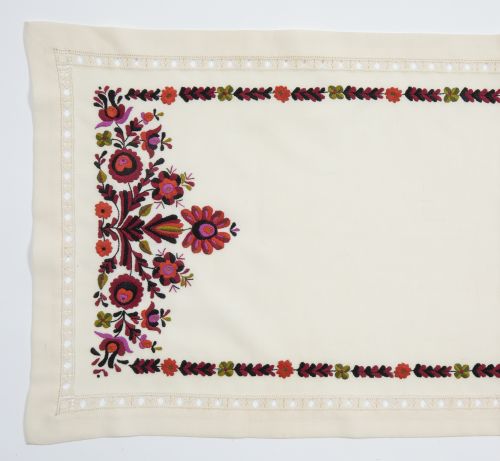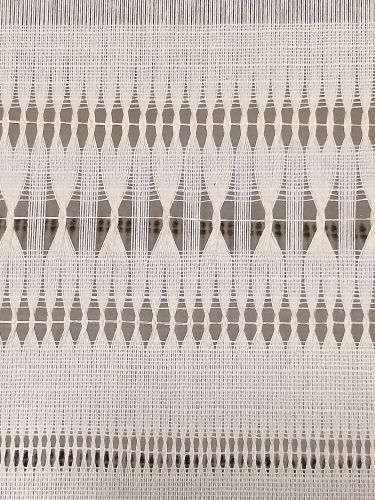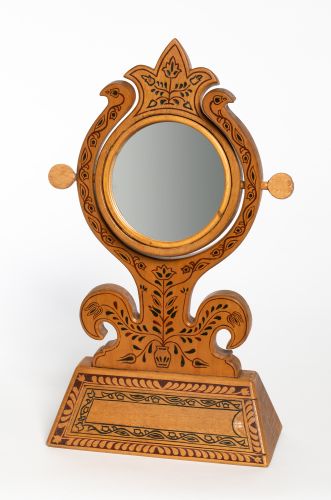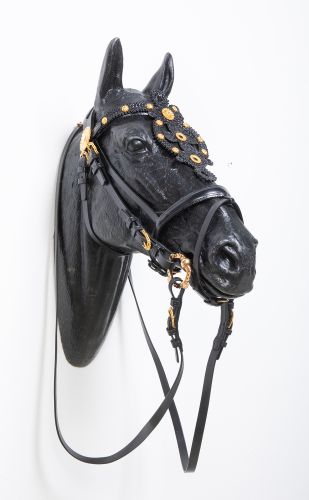Mihály Bársony and his student
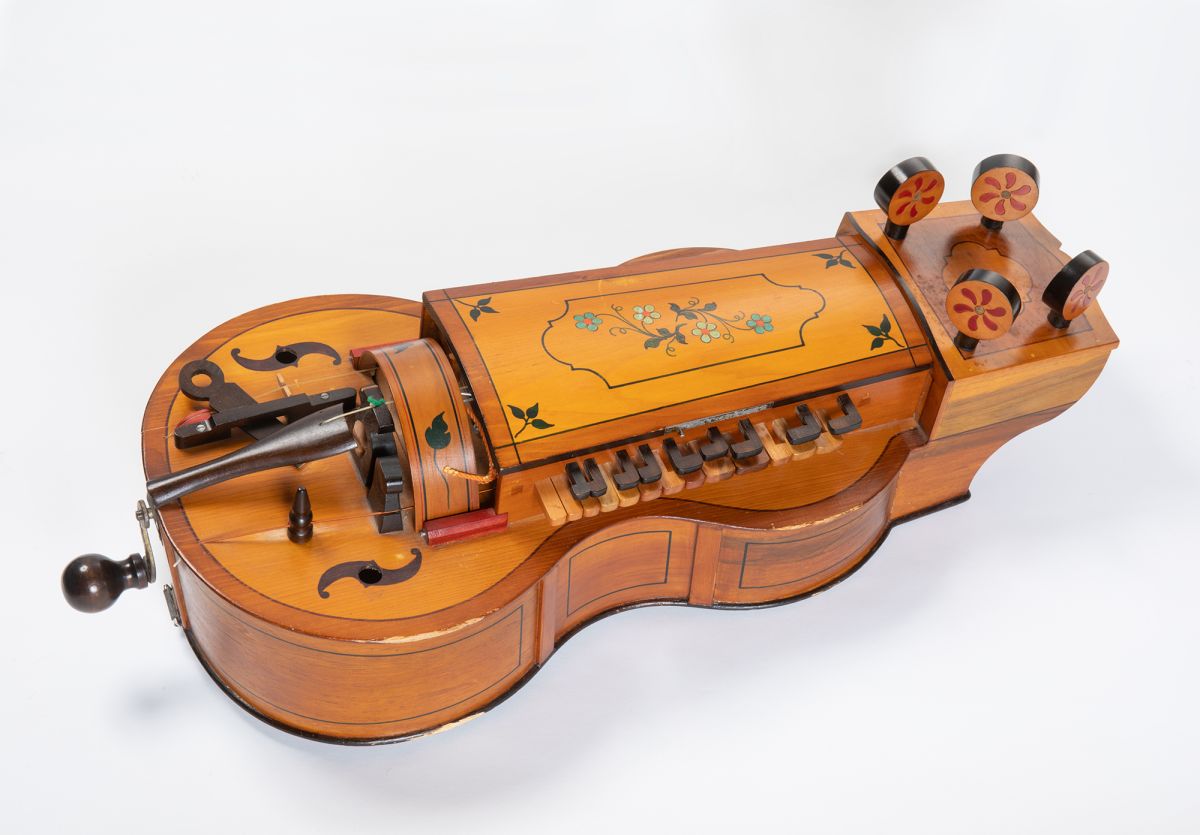
BÁRSONY Mihály (1915–1989)
Hurdy-gurdy / 1978
owned by András Németh
Photo: SULYOK Miklós
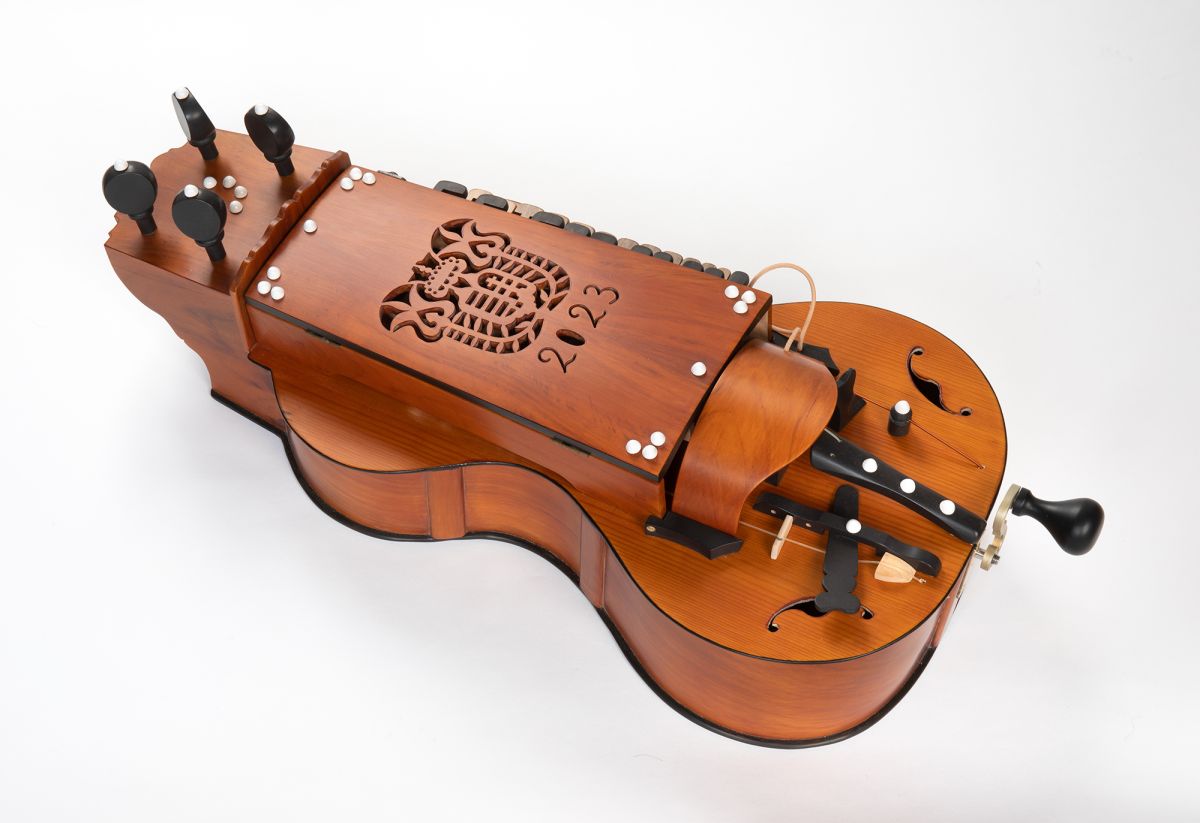
SZERÉNYI Béla
Szentes style hurdy-gurdy with an openwork coat of arms motif / 2023
Photo: SULYOK Miklós
Mihály Bársony (1915–1989), a holder of the honorary title of Master of Folk Art, is one of the foremost and most influential fgures regarding the mu sical traditions of the Dél-Alföld (Southern Great Plain) region. He was an outstanding musician, playing the hurdy-gurdy, the clarinet and the zither equally excellently. He was a highly respected instrumentalist in Tiszaalpár and the surrounding area of farmsteads from the 1930s, when he also made his frst hurdy-gurdies, thus, in a sense, carrying on the historic tradition of hurdy-gurdy making of the nearby town of Szentes. As a young man he was passionate about everything made of wood – he made doors, windows, roof structures, horse-drawn sleighs and barrels – and he even repaired clocks. Te young musicians of the dance house movement, which started in 1972, went on a ’pilgrimage’ to his farmstead in increasing numbers, and there were hardly any folk music ensembles in Hungary at the time who did not have a hurdy-gurdy made by him. Te Bársony hurdy-gurdy is a household name not only in Hungary but in every corner of the world. Mihály Bársony made 213 hurdy-gurdies and several hundred zithers during his lifetime. Afer his death the tools, patterns and unfnished instruments went from his workshop to Béla Szerényi.
Béla Szerényi (1972) was born in Budapest. Afer pursuing studies in clas sical and folk music, he mastered violin making in the School of Instrument Making. He started going on collecting trips to Mihály Bársony and the elderly peasant musicians of the minor region in the mid-1980s. In 1990 he established his workshop, where more than 500 hurdy-gurdies have been made since then. In recent decades he has been studying the technical solutions and design used in old hurdy-gurdies preserved in museums, which helped him to develop his own style. He has a sensitive approach to the changing requirements regarding instruments both as a performer and a teacher: he has adapted and shaped the sound of his hurdy-gurdies to meet the ‘ideal sound’ of our times. His know ledge, and primarily his musical experiences, are carried on by his many stu dents, including his two talented sons, Béla Szerényi Jr and Domokos Szerényi.
